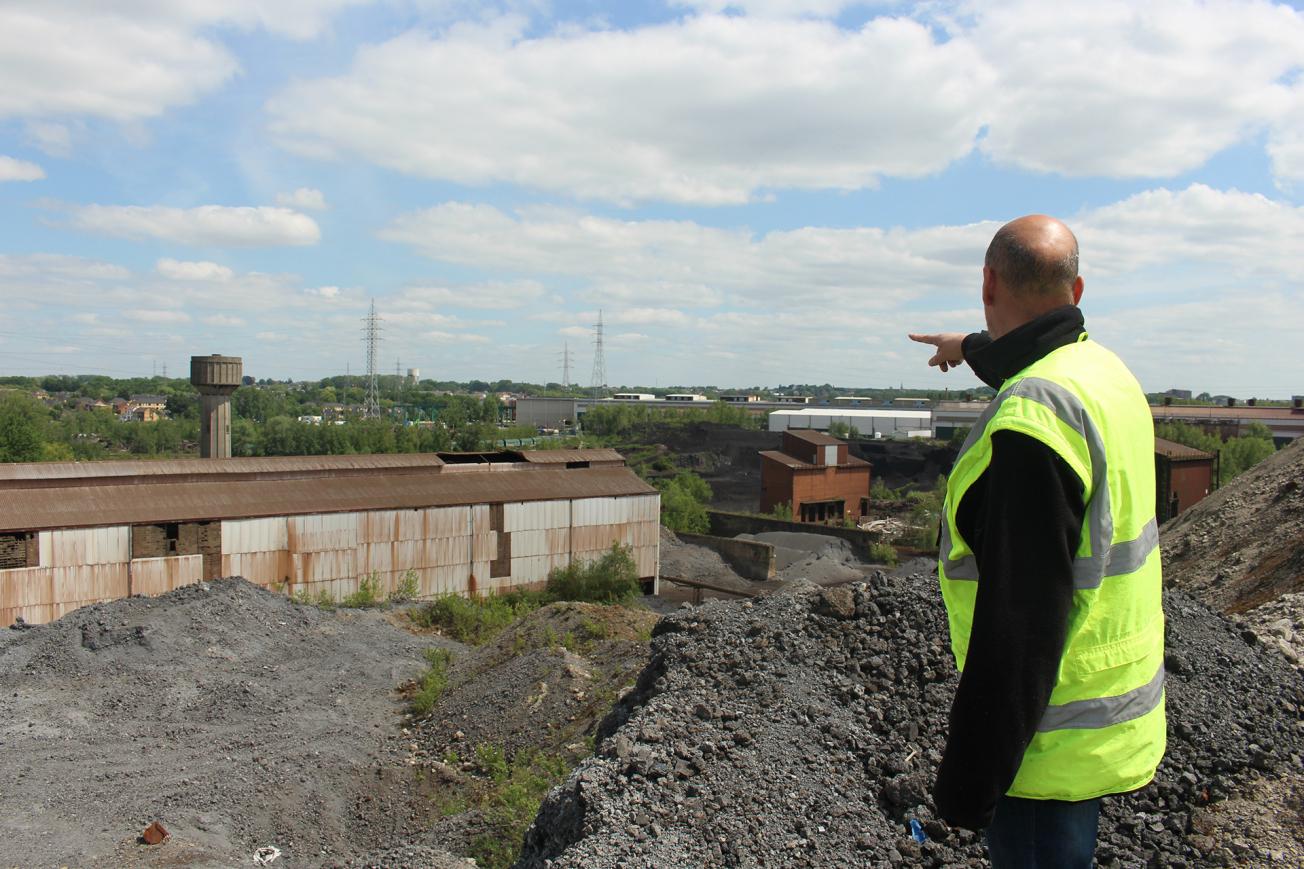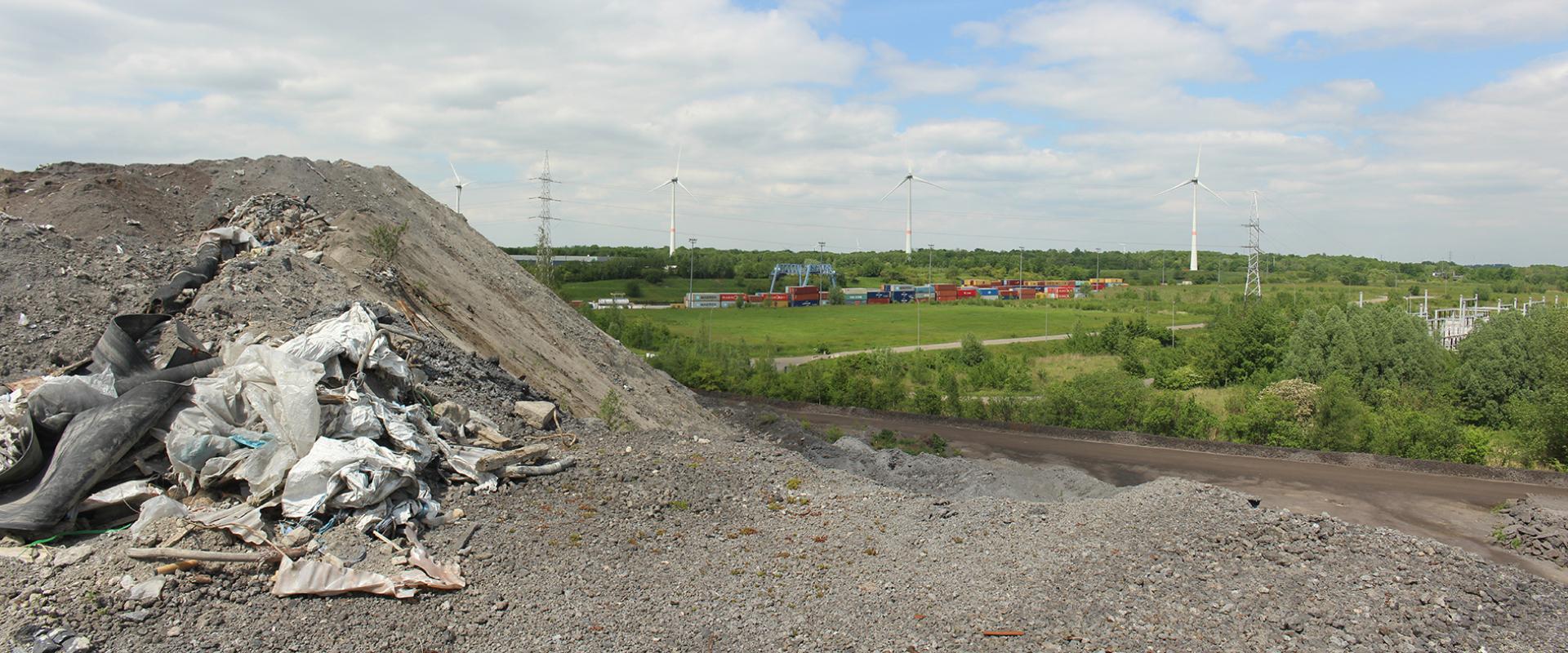
Example of a slag deposit loaded with metallic elements on a former iron and steel site (La Louvière, Belgium, 2020).
© David Caterina - University of Liège
Issues and needs
Metal foundry sites account for a significant proportion of potentially contaminated sites in the European Union. While recent waste from these sites is now being recovered, this is not the case for old aggregate materials with a high content of ferrous and other metals, white and black slag, etc., which are considered to be sources of pollution and are costly to manage or dispose of.
REGENERATIS transforms this situation into an opportunity, because large volumes of resources (metals, materials and land) from former metallurgical sites and dumps can be recovered by urban mining techniques. The main challenge for stakeholders is the environmental risk and the profitability of recovery processes. These risks are all the more significant since in North-West Europe, inventories of metallurgical sites do not take into account the relevant data on the economic potential of the quantity, quality and value of materials.
REGENERATIS combines innovative geophysical characterisation of sites with efficient material recovery processes, a harmonised inventory structure and the use of artificial intelligence algorithms (development of an open source 4D Smart Tool called SMARTIX), for resource recovery from metallurgical sites. Its final goal is to design and implement a new economic model, which will be easy for private and public companies to apply, and which enables the reintegration of raw materials and land in the regional economy.
Expected results
Concretely, the NWE-REGENERATIS project consists in:
- developing a common resource-oriented inventory structure for old metallurgical deposits, based on existing inventories in the countries of North-West Europe,
- the innovative coupling of historical and geophysical analysis methods for the investigation of metallurgical sites in order to collect missing data and to optimise the costs of land investigation studies and reduce their duration,
- developing an open-source 4D SMART (SMARTIX) tool based on an artificial intelligence algorithm,
- enabling a demonstration phase for material-recovery processes by means of pilot tests and large-scale work on different sites, including at least one site in Wallonia.
The results will be tested at three pilot sites located in Teeside in the UK, Pompey in France and La Louvière in Belgium.
BRGM's role
Based on its expertise in subsurface geophysics both in the field and in the laboratory, as well as on historical and field surveys (characterisation of samples), BRGM, in close collaboration with the University of Liège, is developing innovative characterisation methodologies at all the pilot sites, to determine the type and quantity of materials present.
BRGM is also coordinating all the activities carried out on the selected sites in France, including the pilot site in Pompey. In collaboration with the Centre Technologique International de la Terre et de la Pierre (Belgium) and the Materials Processing Institute (United Kingdom), BRGM is helping to design the metal recovery process. In addition, it is participating in the open source development of the SMARTIX decision support tool, as well as in methodological development concerning the screening and characterisation of sites.
Partners
Belgium
- Société Publique d'Aide à la Qualité de l'Environnement, SPAQuE
- Centre Technologique International de la Terre et de la Pierre, CTP
- Liège University
- Openbare Vlaamse Afvalstoffenmaatschappij, OVAM
France
Germany
United Kingdom

REGENERATIS project logo and partners.
© REGENERATIS







